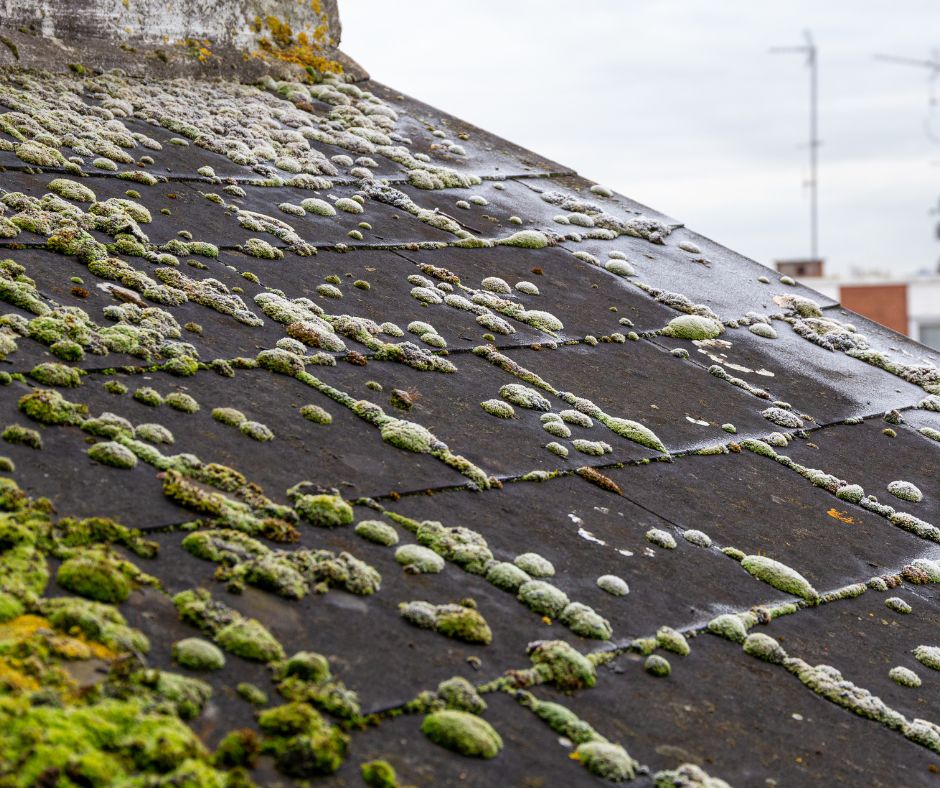In-Depth Exploration of Earthquake Risks and Proven Mitigation Techniques
Understanding the Key Factors Behind Earthquake Occurrences

Understanding the intricate dynamics of tectonic plate movement is essential for effective earthquake-proofing. The phenomenon of earthquakes arises primarily from the constant interactions of tectonic plates that lie beneath the Earth’s surface, which continuously shift due to various geological processes. When these plates collide, separate, or slide against each other, they release significant energy, generating seismic waves that lead to ground shaking, potentially causing extensive damage to structures and infrastructure. Understanding these geological processes equips homeowners with the knowledge needed to implement effective earthquake-proofing strategies tailored to the unique challenges posed by seismic events. Regions like the Pacific Ring of Fire are particularly vulnerable due to their active tectonic boundaries, making awareness and preparation crucial for residents in these areas.
In addition to natural tectonic movements, human activities such as mining operations, reservoir-induced seismicity from large dams, and geothermal energy extraction can also instigate earthquakes. Recognising these anthropogenic triggers is crucial for homeowners as it sheds light on the potential risks associated with their geographical locations. By familiarising themselves with the geological characteristics of their regions, homeowners can proactively adopt targeted measures to enhance their homes’ resilience against seismic forces.
Essential Steps for Evaluating Your Home’s Earthquake Vulnerability
To ensure the success of your home’s earthquake-proofing initiatives, it is imperative to conduct a comprehensive evaluation of its structural integrity. Start by thoroughly inspecting the foundation, walls, and roof for any signs of damage or weaknesses. A residence displaying visible vulnerabilities is at a higher risk of sustaining severe damage during an earthquake, making this assessment a fundamental step in your reinforcement strategy. Homeowners should be attentive to indicators such as cracks in walls or foundations, moisture damage, and sagging roofs—each of which can signify critical structural issues that necessitate immediate attention and remediation.
Once weaknesses have been identified, it is vital to prioritise reinforcements based on your assessment findings. For instance, homes with shallow foundations may require additional anchoring or bolting, while older properties could greatly benefit from wall bracing techniques. Consulting with a qualified structural engineer can provide invaluable insights into specific vulnerabilities and recommend tailored improvements suited to your home’s design and geographical location. Engaging professionals ensures that assessments are thorough and practical, ultimately enhancing safety and fortitude against seismic threats.
The Importance of Seismic Hazard Maps for Homeowners
Seismic hazard maps are invaluable tools for understanding the probability of earthquakes occurring in specific regions. These maps deliver critical information regarding ground shaking intensity and associated seismic hazards, empowering homeowners to make informed decisions about their earthquake-proofing measures. For example, seismic hazard maps can indicate whether a particular area is at an elevated risk for seismic activity, which is essential for planning new constructions or retrofitting existing buildings to maximise their resilience.
Utilising seismic hazard maps allows homeowners to formulate and implement effective earthquake-proofing strategies by identifying areas that are particularly susceptible to intense ground shaking or soil liquefaction. Residents living in high-risk zones can utilise this data to prioritise structural reinforcements such as foundation bolting, flexible designs, and the use of advanced building materials. Ultimately, incorporating insights from seismic hazard maps into your earthquake-proofing approach enhances the efficacy of your efforts and can significantly reduce the risks associated with seismic events.
Effective Strategies for Implementing Robust Earthquake-Proofing Practices

Successful Earthquake-Proofing Case Studies from Around the World
Across the globe, numerous properties have effectively withstood earthquakes through the application of innovative earthquake-proofing measures, showcasing the practical implementation of various techniques. For instance, homes in Japan are often constructed with resilient frameworks specifically designed to absorb seismic energy, illustrating how intentional architectural design can significantly enhance safety and security. The use of base isolation systems in buildings enables them to move independently from ground motion, which greatly reduces damage during an earthquake.
Another significant example includes the “shake table” homes developed in California, which simulate seismic events to assess various construction techniques and materials. This research aims to determine which methods provide optimal protection and durability during earthquakes. The following key techniques have emerged from these successful case studies:
- Utilising base isolation systems to minimise building sway.
- Implementing reinforced concrete walls to improve overall stability.
- Incorporating flexible connections between structural components to absorb shock.
- Installing shear walls to provide critical lateral strength and resistance.
- Employing advanced materials, including fibre-reinforced polymers, to enhance flexibility.
- Strategically landscaping to prevent landslides near foundations.
- Retrofitting older structures with modern materials and techniques.
- Conducting regular maintenance and inspection protocols to ensure ongoing resilience.
These examples effectively demonstrate the positive impact of innovative earthquake-proofing measures and inspire homeowners to consider similar strategies to protect their properties.
Thorough Analysis of Foundation Reinforcement Needs
Reinforcing the foundation is a fundamental aspect of the earthquake-proofing process. Experts assert that a robust and secure foundation can significantly reduce the likelihood of structural failure during seismic events. Foundation reinforcement typically involves various techniques, including bolting the house to its foundation to create a stronger connection between the building and its base. Additionally, using flexible materials can help absorb seismic forces, allowing the structure to sway without incurring severe damage.
When contemplating foundation reinforcement, choosing the right materials and methods is crucial. Here are some recommended options to consider:
- Utilising epoxy resin for effective crack filling and reinforcement.
- Incorporating steel plates or rods to enhance tensile strength.
- Employing concrete piers for deeper foundational support.
- Utilising advanced composites to improve flexibility.
- Integrating reinforcement bars within concrete for enhanced stability.
- Installing helical anchors to secure the foundation.
- Implementing soil stabilization techniques to enhance ground integrity.
- Conducting periodic assessments to ensure the foundation’s integrity over time.
Consulting a qualified structural engineer can provide tailored recommendations based on specific foundation requirements, ensuring that your home is adequately fortified against seismic activity.
The Crucial Role of Professional Assessments in Earthquake Preparedness

Professional assessments conducted by structural engineers play a vital role in earthquake-proofing initiatives. These experts possess the specialised knowledge and experience necessary to identify specific vulnerabilities within your home that may not be readily apparent. Through comprehensive inspections, engineers can uncover structural weaknesses and recommend targeted solutions that effectively address potential risks.
A professional assessment generally involves a thorough evaluation of the home’s foundation, walls, roof, and other critical components. Engineers may utilise advanced techniques, including machine learning algorithms, to analyse seismic performance data, thereby providing a more scientific approach to vulnerability identification. By leveraging their expertise, homeowners can prioritise modifications and reinforce structures according to the latest industry standards and best practices.
Moreover, professional assessments ensure compliance with local building codes and regulations, which are essential for safety and maintaining property value. Engaging professionals not only enhances the overall resilience of the home but also instills confidence in homeowners regarding their preparedness for seismic events.
Effective Retrofitting Techniques for Enhancing Older Homes
Retrofitting older homes is crucial for improving their seismic resilience, especially since many were built before modern building codes were established. This process involves upgrading structures to meet current safety standards and enhance their capacity to withstand earthquakes. Effective retrofitting techniques can vary based on the original design and materials of the home, often incorporating methods such as wall bracing and roof anchoring.
Common retrofitting techniques that can effectively strengthen older homes include:
- Incorporating shear walls to bolster lateral stability.
- Adding plywood bracing to exterior walls for additional support.
- Installing steel straps to secure the roof to the walls.
- Reinforcing chimneys to prevent collapse during seismic events.
- Upgrading foundations with bolting and anchoring systems.
- Utilising cross-bracing for enhanced wall strength.
- Employing flexible coupling systems between floors and walls.
- Implementing seismic-resistant designs during major renovations.
By retrofitting older homes, homeowners can substantially enhance safety and mitigate potential damage during seismic events. Collaborating with professionals experienced in retrofitting is essential to ensure that applied techniques are suitable for the specific home and its location.
The Impact of Building Codes on Earthquake Resilience
Modern building codes hold immense significance in the context of earthquake-proofing strategies. These codes establish minimum standards for construction practices, ensuring that newly constructed structures are designed to effectively endure seismic activity. Adhering to these codes dramatically enhances a home’s resilience to earthquakes, as they encompass the latest research, technologies, and best practices in the field.
Homeowners should familiarise themselves with the specific code requirements relevant to their regions, as seismic standards can vary significantly based on local conditions. Key building code standards related to earthquake-proofing may include stipulations regarding foundation design, materials used for structural components, and mandates for shear wall installation.
Essential building code standards to consider include:
- International Building Code (IBC) guidelines for seismic design.
- Local amendments to the IBC based on regional seismic hazards.
- Specifications for employing flexible materials in construction.
- Requirements for foundation anchoring and bolting.
- Standards for lateral force-resisting systems.
- Provisions for non-structural elements, such as chimneys and overhangs.
- Recommendations for site-specific seismic design parameters.
- Guidelines for building permits and inspections.
By complying with modern building codes, homeowners can ensure their properties are constructed to withstand seismic threats, ultimately contributing to a more resilient community.
Strategies to Strengthen Your Home Against Earthquakes
Optimal Materials for Effective Earthquake-Proofing
Choosing the right materials is crucial for successful earthquake-proofing. The materials selected should exhibit properties that enhance both strength and flexibility, allowing a structure to absorb and dissipate seismic forces without incurring significant damage. Steel, for instance, is well-known for its high strength-to-weight ratio, making it an outstanding choice for reinforcing structures. Reinforced concrete also offers necessary rigidity while permitting a degree of flexibility during seismic events.
Additionally, employing flexible polymers and composites can be particularly advantageous. These materials can stretch and bend without breaking, effectively absorbing energy during ground motion. For example, incorporating rubber bearings can facilitate a building’s independent movement during ground shaking, thereby minimising structural damage. Selecting the right combination of materials tailored to specific designs can greatly enhance a home’s seismic resilience.
Moreover, advanced materials such as fibre-reinforced polymers and cross-laminated timber can provide innovative solutions. Not only do these materials strengthen structural integrity, but they are also increasingly recognised for their sustainability and cost-effectiveness. Ultimately, the materials chosen should align with the specific requirements of the building while adhering to local building codes and standards.
Effective Techniques for Reinforcing Walls and Floors Against Seismic Forces
Reinforcing walls and floors is a critical component of earthquake-proofing a home. Structural weaknesses in these areas can lead to catastrophic failures during seismic events. Implementing effective reinforcement techniques can significantly bolster a home’s ability to withstand earthquakes. A common approach involves adding shear walls, which are vertical walls specifically designed to resist lateral forces resulting from ground shaking.
Another effective technique includes installing plywood bracing, which adds extra stiffness and strength to walls. By creating a rigid diaphragm effect, plywood bracing prevents walls from swaying excessively during an earthquake. Additionally, utilising flexible connectors between structural elements improves energy absorption and movement during seismic events, reducing the risk of structural failure.
Here are several effective techniques for reinforcing walls and floors:
- Incorporating shear walls to provide lateral stability.
- Using plywood or OSB sheathing for wall bracing.
- Installing diagonal bracing or tension rods for enhanced support.
- Utilising flexible connectors to improve energy dissipation.
- Reinforcing floors with additional joists or beams.
- Employing concrete overlays for increased strength.
- Using insulation and soundproofing materials that also enhance structural integrity.
- Conducting regular inspections to monitor structural performance over time.
Implementing these reinforcement techniques can significantly boost a home’s resistance to seismic forces, ensuring greater safety for all occupants.
The Critical Importance of Securing the Roof and Chimney for Earthquake Safety
Securing the roof and chimney is paramount for effective earthquake-proofing of a home. During seismic events, unsecured roofs can detach, posing substantial risks to both occupants and individuals nearby. Similarly, chimneys can collapse if not adequately secured, leading to hazardous debris scattered around the area. Employing effective securing techniques can prevent these issues and significantly improve the overall safety of the structure.
Utilising straps and braces to secure roofs is essential; these components act as anchors, ensuring roofing materials remain firmly in place during seismic activity. Furthermore, reinforcing chimneys with metal straps and ensuring they are anchored to the overall structure can prevent them from becoming airborne during an earthquake.
Here are techniques to enhance the security of roofs and chimneys:
- Installing metal straps to secure the roof to the walls.
- Using braces to reinforce chimney stability.
- Applying flexible flashing around chimney joints to prevent leaks.
- Conducting regular inspections to identify any signs of wear or damage.
- Utilising lightweight roofing materials to reduce load stress.
- Incorporating seismic-resistant designs for chimney structures.
- Ensuring proper ventilation to minimise pressure buildup.
- Implementing regular maintenance protocols for roofs and chimneys.
By efficiently securing roofs and chimneys, homeowners can mitigate hazards associated with seismic activity, ultimately enhancing their homes’ safety and resilience.
Research-Backed Advantages of Earthquake-Proofing Your Residence
Enhancing Safety for Residents Through Earthquake-Proofing
The process of earthquake-proofing significantly enhances safety by reducing the likelihood of injury or fatality during seismic events. A fortified home ensures that the structure remains intact, considerably decreasing the chances of collapse and protecting its occupants. This increased structural integrity provides peace of mind and a safer living environment for residents, fostering a sense of security amidst natural disasters.
Moreover, effective earthquake-proofing measures, such as foundation reinforcements and wall bracing, guarantee that homes can endure the forces generated during an earthquake. This not only protects human lives but also safeguards valuable belongings, minimising the financial repercussions of repairs and reconstruction. By investing in earthquake-proofing, homeowners prioritise the long-term safety of their families and the welfare of their communities.
Additionally, the psychological benefits of residing in a well-protected home are profound. Homeowners frequently report a reduction in anxiety concerning seismic risks, contributing to improved mental well-being and overall quality of life. Ultimately, earthquake-proofing transcends mere structural enhancements; it represents a critical investment in safety and peace of mind.
The Impact of Earthquake-Proofing on Property Value and Insurance Costs
Homes that undergo earthquake-proofing can see a significant positive impact on their property value, as enhanced safety and durability make them more appealing to prospective buyers. Today’s buyers are increasingly aware of the risks associated with seismic events, and homes featuring established earthquake-resistant attributes often command higher market prices. This valuation reflects not only the physical characteristics of the home but also the reassurance stemming from improved safety.
In addition to property value, earthquake-proofing can lead to lower insurance premiums. Insurance companies recognise that homes equipped with effective earthquake-proofing measures face a reduced risk of damage. As a result, they often provide discounted rates for homeowners who invest in reinforcement strategies. This can yield considerable cost savings over time, making earthquake-proofing a financially sound decision.
Furthermore, in areas vulnerable to seismic activity, owning an earthquake-proofed home can facilitate the process of acquiring insurance coverage, as insurers may mandate that specific safety standards be met. Therefore, investing in earthquake-proofing not only protects the physical structure but also improves its financial viability and insurability.
Long-Term Financial Benefits of Earthquake-Proofing
While the initial investment in earthquake-proofing may be significant, the long-term financial savings often outweigh these upfront costs. Homes that are effectively reinforced can avoid considerable repair expenses following an earthquake, potentially saving homeowners thousands or even millions of dollars in damages. The financial rationale for earthquake-proofing becomes evident when considering the potential devastation an unprepared home may face during a seismic event.
Moreover, the durability associated with earthquake-proofed homes extends their lifespan and decreases maintenance costs. By selecting high-quality materials and employing proven reinforcement techniques, homeowners can mitigate wear and tear, ultimately reducing the need for costly repairs. This long-term investment in safety yields ongoing savings, making it a financially prudent choice for homeowners.
In addition to physical repairs, the emotional and psychological toll of living with the fear of potential damage during an earthquake should not be overlooked. By investing in earthquake-proofing, homeowners can experience peace of mind, contributing to a healthier and more fulfilling living environment.
The Psychological Benefits of Living in a Secure Home
Living in an earthquake-proof home offers significant psychological advantages, particularly in areas prone to seismic activity. Knowing that one’s home can withstand potential disasters alleviates anxiety and instils a sense of security. Homeowners frequently report increased peace of mind, recognising they have taken proactive measures to safeguard their families and property.
This sense of security extends beyond the physical structure; it profoundly influences overall quality of life. A secure home fosters a more relaxed atmosphere, allowing residents to engage in daily activities without the constant worry of what might happen during an earthquake. This psychological relief is invaluable, promoting mental well-being and enriching the overall living experience.
Furthermore, when communities prioritise earthquake-proofing, the collective sense of safety strengthens social bonds. Residents can feel assured that their neighbours are equally committed to fortifying their homes, leading to a more empowered community ready to face potential challenges together. Ultimately, earthquake-proofing not only protects buildings but also enhances the emotional landscape of neighbourhoods and families.
Key Steps in Earthquake-Proofing Your Home
Conducting a Thorough Home Assessment for Earthquake Preparedness
The initial step in earthquake-proofing your home is to carry out a comprehensive assessment of its current condition. This detailed evaluation involves meticulously scrutinising the foundation, walls, roof, and other structural components to identify any potential weaknesses. Homeowners should be vigilant for visible cracks, signs of water damage, or unusual sagging, as these can indicate vulnerabilities that necessitate attention.
Engaging a structural engineer can be advantageous during this process, as they possess the expertise necessary to identify specific risks associated with your home’s design and location. After pinpointing vulnerabilities, homeowners should prioritise necessary reinforcements based on the assessment results. The ultimate aim is to develop a comprehensive plan that addresses potential weaknesses and enhances the overall resilience of the home.
Documenting the assessment findings is vital, as it establishes a baseline for future inspections and improvements. By maintaining detailed records, homeowners can monitor changes and ensure that any modifications align with the overarching goal of enhancing safety and structural integrity.
Implementing Structural Reinforcements: Key Steps to Follow
Based on the home assessment, taking action to implement necessary structural reinforcements is a critical step in the earthquake-proofing process. This may include bolting the house to the foundation, adding shear walls, and using flexible materials to strengthen the home’s resilience. Reinforcement techniques will vary based on the specific needs of the structure, but the objective remains to fortify the building against seismic forces.
For example, bolting the house to its foundation creates a secure connection that prevents lateral movement during an earthquake. Additionally, incorporating shear walls provides essential lateral stability, significantly decreasing the risk of collapse. Using flexible materials, such as rubber bearings or energy-absorbing polymers, can further enhance the structure’s ability to endure ground motion.
It is essential to collaborate with experienced contractors or structural engineers who are knowledgeable about local building codes and best practices. These professionals can ensure that the reinforcements are executed correctly, adhering to all safety standards and further enhancing the home’s resilience against seismic events.
Securing Furniture and Appliances: Best Practices for Preparedness
Securing heavy furniture and appliances is a fundamental aspect of earthquake preparedness that is often overlooked. During seismic events, unsecured items can become dangerous projectiles, resulting in injuries and property damage. To mitigate this risk, homeowners should proactively secure large furniture and appliances.
Utilising straps, brackets, and other anchoring systems can ensure that heavy items remain in place, preventing them from toppling over during seismic activity. For example, securing bookshelves to walls or using anti-tip brackets for large appliances can significantly reduce the risk of injury. Appliances like refrigerators and water heaters should also be anchored, as their movement can lead to gas leaks or electrical hazards.
In addition to securing furniture, homeowners should consider developing a comprehensive plan that includes emergency protocols for safeguarding valuable items. By preparing in advance, residents can ensure that their homes are safe and that potential hazards are minimised during an earthquake.
Creating an Effective Emergency Plan: Steps to Follow
Establishing a comprehensive emergency plan is critical for ensuring safety and preparedness during an earthquake. This plan should outline clear evacuation routes, communication strategies, and a well-stocked supply kit tailored to the needs of all household members. Designating meeting points and ensuring that everyone in the household is familiar with the plan is essential for an effective response.
When formulating an emergency plan, homeowners should consider the specific needs of all household members, including pets and individuals with disabilities. Incorporating these factors guarantees that everyone can respond effectively in the event of an earthquake. Regularly practising emergency drills can also help familiarise all household members with the plan, ensuring a more efficient response during an actual event.
Moreover, homeowners should stay informed about local emergency services and resources available in their area. Understanding how to access assistance and communicate effectively during emergencies can greatly enhance overall preparedness and safety. By dedicating time to develop and rehearse an emergency plan, residents can bolster their resilience and ability to respond to unexpected seismic events.
Maintaining and Updating Your Earthquake-Proofing Measures
The Importance of Regular Inspections and Maintenance for Earthquake Preparedness
Regular inspections are essential to ensure that your earthquake-proofing measures remain effective over time. Homeowners should schedule routine evaluations to check for signs of wear, damage, or deterioration in structural reinforcements. This proactive approach allows for early detection of potential issues, ensuring that earthquake-proofing measures continue to meet safety standards.
During inspections, it is vital to examine the foundation, walls, roof, and all structural elements for any signs of stress or damage. Homeowners should also assess any retrofitting work to confirm its integrity and effectiveness. Any necessary repairs or updates should be promptly addressed to maintain the home’s resilience against seismic forces.
Additionally, keeping detailed records of inspections and maintenance activities can provide valuable insights into the effectiveness of earthquake-proofing measures over time. This documentation can help homeowners stay organised and accountable for ongoing safety improvements, ensuring their homes remain secure against potential seismic threats.
Determining the Frequency of Updates for Your Earthquake-Proofing Measures
The frequency of updates to earthquake-proofing measures may depend on several factors, including the home’s age, the severity of local seismic activity, and any changes to building codes or standards. Generally, it is advisable to review and update measures every 5-10 years, particularly in areas with a high risk of seismic events.
Homeowners should also consider updating their earthquake-proofing measures following significant seismic occurrences, regardless of when the next scheduled update is planned. This practice ensures that any damage or wear sustained during an earthquake is promptly addressed, preserving the home’s resilience and safety.
Staying informed about advancements in earthquake-proofing technologies and techniques can assist homeowners in determining when updates are necessary. Proactively seeking improvements can greatly enhance a home’s ability to withstand future seismic events, ensuring long-term safety and stability.
Staying Updated on New Technologies and Techniques for Earthquake-Proofing: Why It Matters
Keeping informed about advancements in earthquake-proofing technologies and techniques is crucial for homeowners aiming to enhance their homes’ resilience. The field of earthquake engineering is continually evolving, with researchers and engineers developing innovative materials and methods to improve structural safety. Homeowners should consistently seek information regarding cutting-edge solutions, such as advanced damping systems or new composite materials that enhance flexibility and strength.
Participating in community workshops, webinars, or local seminars can provide invaluable insights into the latest earthquake-proofing strategies. Engaging with local building authorities or professional organisations can also offer resources and guidance on the most current best practices.
Furthermore, homeowners should consider subscribing to industry publications or following relevant online forums to stay updated on emerging trends and research within the realm of earthquake resilience. By remaining informed, homeowners can make educated decisions regarding the updating of their earthquake-proofing measures, ensuring their homes remain safe and secure against seismic threats.
The Importance of Documentation and Record-Keeping in Earthquake Preparedness
Maintaining meticulous records of all inspections, maintenance, and updates is crucial for tracking the effectiveness of earthquake-proofing measures over time. This documentation provides a comprehensive history of the home’s condition, aiding homeowners in identifying trends or changes that may require attention.
Homeowners should document all reinforcement work specifics, including materials used, installation dates, and any professional assessments conducted. This information can prove invaluable when seeking insurance coverage or during property transactions, as it demonstrates a commitment to safety and compliance with building codes.
Moreover, maintaining records of regular inspections can help homeowners recognise patterns of wear or damage, enabling timely interventions and updates. A well-maintained documentation system not only enhances the home’s safety but also contributes to its overall value and insurability, providing homeowners with peace of mind regarding their earthquake preparedness.
Frequently Asked Questions About Earthquake-Proofing
What Is Earthquake-Proofing?
Earthquake-proofing involves a series of strategies and techniques aimed at enhancing a home’s structural integrity, ensuring it can withstand seismic forces and minimise damage during an earthquake.
How Can I Evaluate My Home’s Earthquake Vulnerability?
Start by scrutinising your home for cracks, water damage, and structural weaknesses. Consider enlisting a structural engineer to conduct a professional evaluation to identify specific vulnerabilities.
What Materials Are Most Effective for Earthquake-Proofing?
Steel, reinforced concrete, and flexible polymers are often recommended due to their strength and ability to absorb seismic forces, making them ideal choices for earthquake-proofing.
How Frequently Should I Update My Earthquake-Proofing Measures?
It is advisable to review and update earthquake-proofing measures every 5-10 years or following significant seismic events to ensure ongoing safety and effectiveness.
What Are Shear Walls, and Why Are They Important?
Shear walls are vertical walls designed to resist lateral forces during an earthquake. They provide critical stability and strength, significantly reducing the risk of structural failure.
How Can I Secure My Furniture During an Earthquake?
Utilise straps, brackets, and anchoring systems to secure heavy furniture and appliances in place, minimising the risk of them toppling over during seismic activity.
What Is a Seismic Hazard Map?
A seismic hazard map illustrates the likelihood of earthquakes in specific areas, helping homeowners assess risks and implement appropriate earthquake-proofing measures.
Why Is a Professional Assessment Necessary for Earthquake-Proofing?
Professional assessments offer expert insights into your home’s specific vulnerabilities, ensuring that all potential risks are effectively addressed and in compliance with safety standards.
How Do Building Codes Affect Earthquake-Proofing?
Modern building codes establish minimum safety standards for construction practices, significantly enhancing a home’s ability to withstand earthquakes and ensuring compliance with local regulations.
What Psychological Benefits Are Associated with Earthquake-Proofing My Home?
Earthquake-proofing enhances safety and reduces anxiety related to seismic risks, leading to improved mental well-being and a greater sense of security for residents.
Explore our world on X!
The post Earthquake-Proofing Home: Essential Tips and Techniques appeared first on Survival Bite.
The Article Earthquake-Proofing Your Home: Key Tips and Strategies Was Found On https://limitsofstrategy.com



